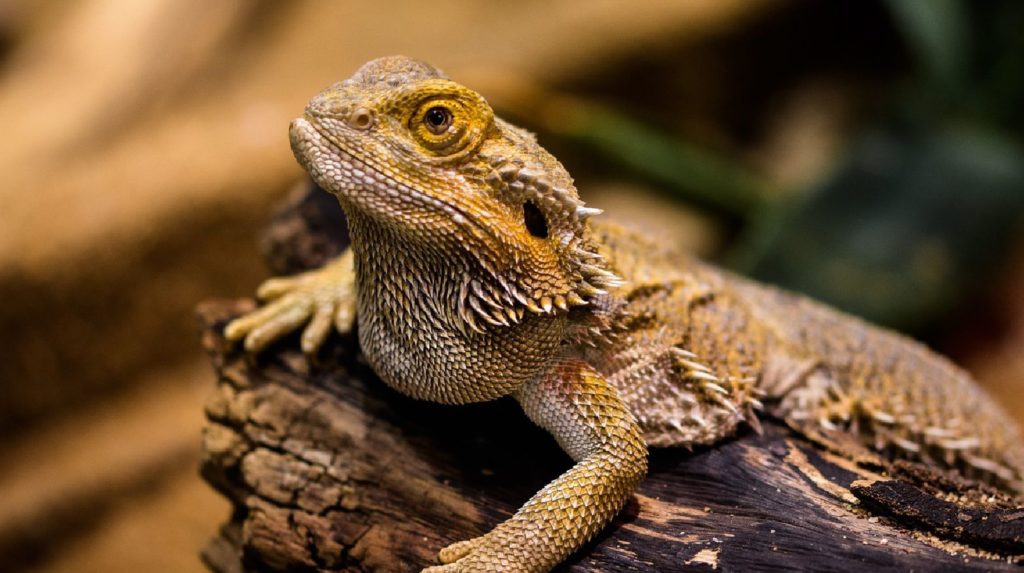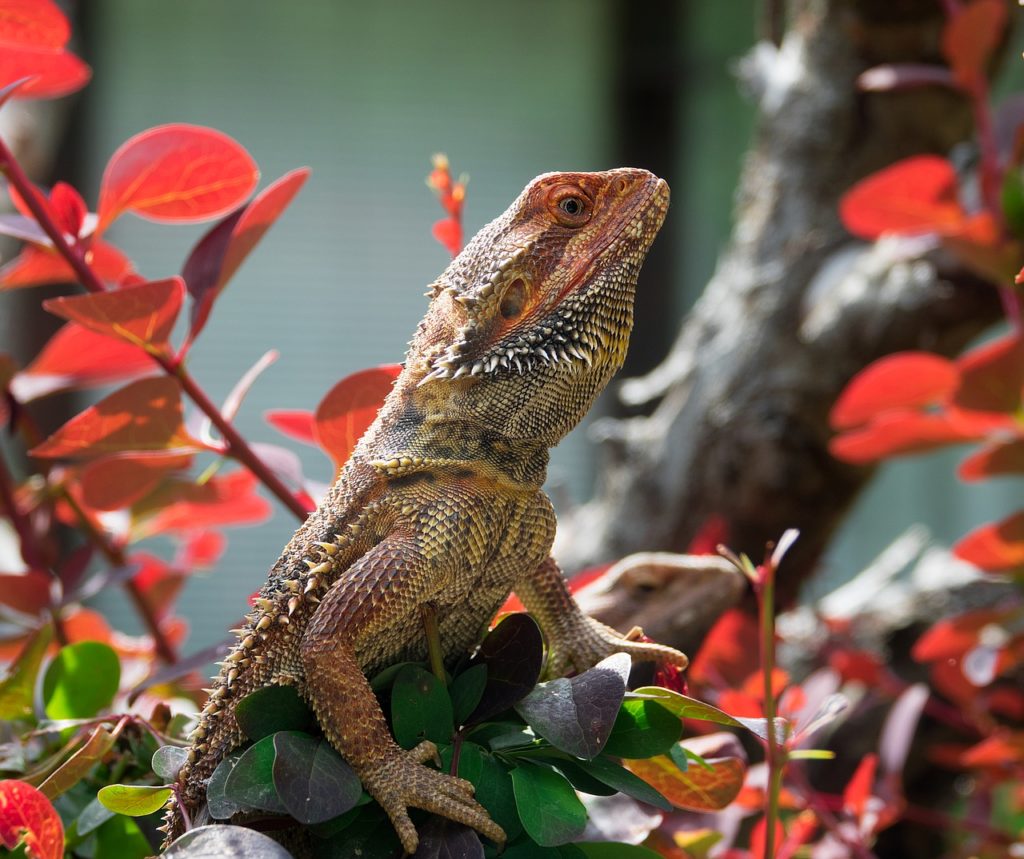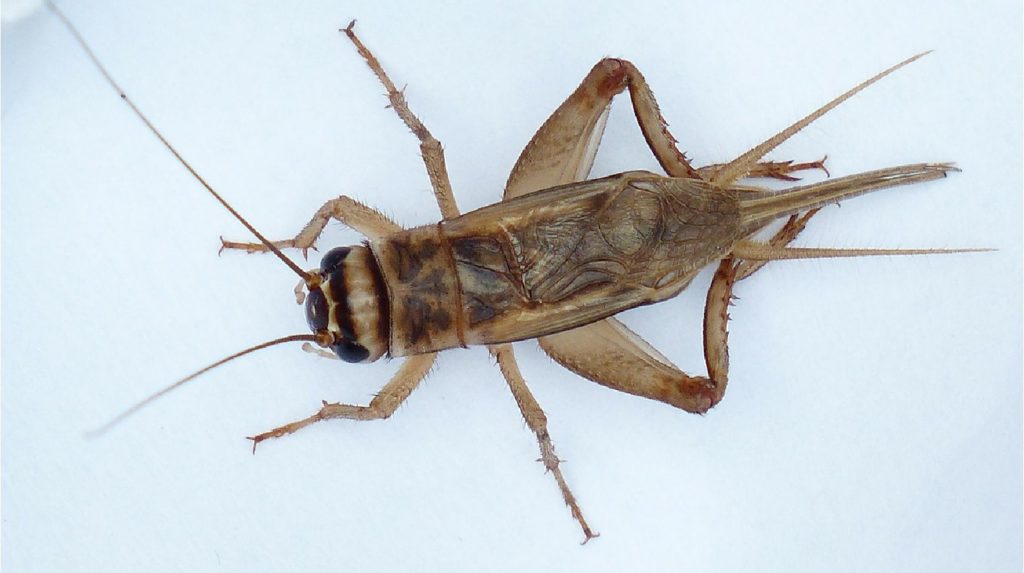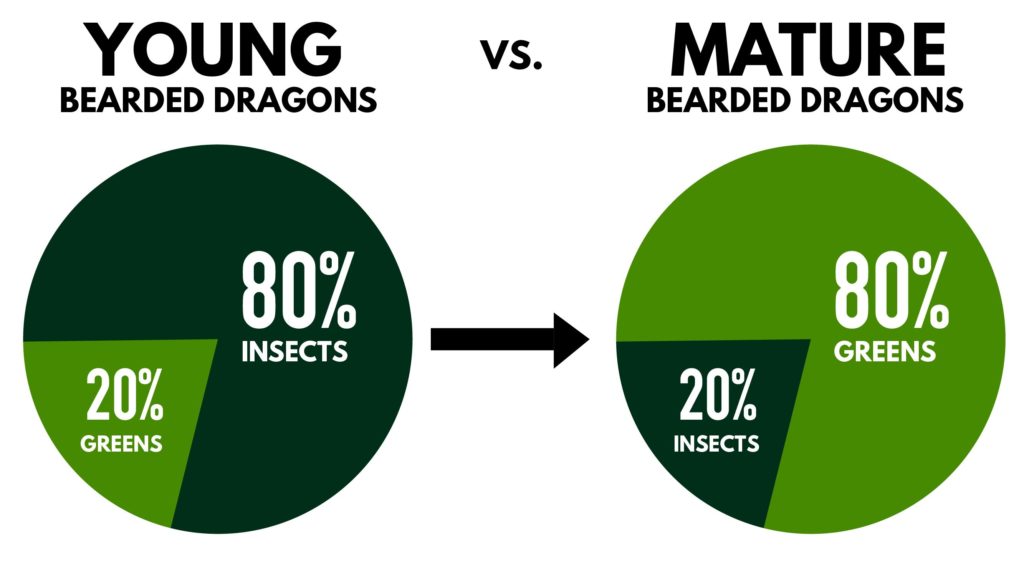Bearded dragons make excellent pets, and continue to be one of the most popular breeds among reptile hobbyists. They are relatively easy to care for, have a fairly long life span, and are known for being exceptionally friendly.
Bearded dragons often form a special bond with their caretakers. It’s not unusual for beardies to respond to the sound of their owner’s voice, or to engage in attention-getting behavior when their handler is nearby.

Bearded dragons are beautiful, fun to watch, and very interactive.
Before you run out and buy your adorable and friendly lizard, it’s important to consider all the relevant bearded dragon costs.
Make sure you’re aware of the upfront and ongoing expenses you’ll need to cover in order to keep your new pet healthy and happy.
Quick Navigation
Purchasing a Bearded Dragon
The cost of a bearded dragon varies, depending on several factors.
- Age: Juvenile baby dragons cost less than larger, more mature ones. Baby beardies typically sell from around $25 – $65. Older dragons sell for up to $100, and sometimes more.
- Type: The inland bearded dragon is the type most commonly sold as a pet, though there are several other species. Some bearded dragon morphs that are specially bred to display particular attributes (such as bright coloring) may be more expensive.
- Where you buy: The amount you’ll pay for your bearded dragon can also depend on whether you purchase it from a pet store or directly from a breeder. Bearded dragons can also be ordered through online sellers, and bought at reptile expositions.
Support responsible reptile breeding and selling by dealing only with reputable sellers. Don’t be afraid to ask questions if you’re not sure.
Housing Your Bearded Dragon
Before you can bring your new little friend home, you’ll need to create an ideal habitat for him or her.
This starts with a suitable tank or enclosure. The enclosure should be made of glass or clear plastic and must be of quality construction.
It’s important to select an enclosure that’s large enough to accommodate healthy growth for your bearded dragon.
Not only does a beardie need plenty of space to grow to its optimal size, there needs to be enough room to create the heat gradient necessary for him or her to thrive.
A tank to house your bearded dragon can range anywhere from $50 to several hundred dollars.
- The enclosure for a juvenile bearded dragon should be at least 20 gallons. Mature dragons will need a tank that measure 48″ x 24″ x 24″, which is about 125 gallons. It will save money in the long run to purchase a larger tank from the beginning.
- Make sure the enclosure is sealed off at each corner, to prevent escape or injury and to allow for proper disinfection.
- The habitat should be made from materials that are easy to clean and disinfect.
- Use a top that provides adequate ventilation for your bearded dragon habitat. Make sure you use a screened top rather than a solid one so that your pet has plenty of fresh air. This also helps prevent too much heat buildup. Some enclosures will come with a suitable top. If yours doesn’t, you will have to purchase one – the cost for a good screened enclosure top can range from $25 to $50, depending on size, brand, etc.
Once you get a proper enclosure, it’s time to go through the list of things you’ll need to buy in order to provide a safe and enjoyable home for your new friend.
Heat Lamps
Heat lamps are vital to the health of your pet. Bearded dragons are cold-blooded, so they need heat from external sources.
In order to recreate the arid desert environment bearded dragons inhabit in the wild, you will need to ensure a proper heat gradient within your enclosure.
This means that you must maintain different temperatures in different parts of the tank.
During the day, the temperature should be between 80-90 degrees Fahrenheit on the cool side of your bearded dragon habitat. The hot side should generally run between 90 – 100 degrees Fahrenheit (and up to 110 degrees for juveniles).
These high temperatures are achieved by using a heat lamp. Heat lamps for reptiles come in different varieties and various wattages. Most come with a round fixture that can be hung above the enclosure, or set directly on the top.
These bulb-fixture combinations usually cost between $25 and $50. Replacement bulbs start around $5 or $10.
Additional Heat Sources
You may want to incorporate a heat pad into your bearded dragon habitat in order to maintain enough warmth to keep your lizard healthy. Heat pads are usually around $15 – $30.
Read the instructions on any heating pad you purchase so that you don’t use it in a way that creates a fire hazard or other safety risk for you or your pet.
Heat rocks are not recommended for use in a bearded dragon enclosure.
UVB Lighting
In addition to a heat lamp, your bearded dragon habitat needs to have a UV light. Your little lizard will need daily exposure to ultraviolet light in order to stay healthy and content. Without adequate UV lighting, your pet could face dire health consequences.
The types of lights used for this purpose are generally fluorescent tube lights, compact fluorescent lights, and mercury vapor lights.
As with heat bulbs, UV bulbs can be purchased with a fixture. You can also buy a combination lighting setup that includes a fixture outfitted with both a heat bulb and UV bulb.
UV lights can range in price from under $10 to $50 or more, depending on the size, style, and whether a fixture and/or other bulbs are included in the setup.
UVB lighting is extremely important for the health of your bearded dragon. If you’re not knowledgable in this area, I highly recommend that you check out our bearded dragon lighting guide.
Heating and Lighting Accessories
You may need a couple of supplies to help you run your heating and lighting setup efficiently and safely.
- Timer: It’s helpful to put your lights on a timer to ensure adequate and consistent lighting and heating for your bearded dragon. Timers are generally inexpensive and are easy to set up and use. Simple timers can usually be purchased for under $20.
- Power strip: Since you’ll be plugging in multiple lights and likely a heating pad, too, it’s a good idea to have a surge-protecting power strip. This way, you’ll have plenty of outlets to run your habitat without creating a safety hazard. Power strips start around $10 and can go up to $50 or more.
Thermometers
Thermometers help you maintain a healthy heat gradient in your bearded dragon habitat. Inexpensive adhesive strip thermometers will suffice, but you may need to replace them every so often.
There are several types of thermometers on the market, ranging in price from a few dollars to more than $30.
Substrates

You’ll need to get some kind of covering for the bottom of the enclosure.
- Reptile carpets: Many bearded dragon owners use thin strips of carpet specially made for reptile enclosures. If you use reptile carpet, be sure to clean and sanitize it regularly – and replace it when it begins to show signs of wear. Bearded dragon claws can become caught in loose or frayed carpeting.
- Ceramic tiles: Some bearded dragon owners prefer to use tile as flooring for their bearded dragon tank. The main advantage of a smooth substrate like this is the ease of cleaning and disinfecting. However, this type of flooring can make it difficult for your pet to get good traction when chasing down crickets.
- Sand, dirt, or pebbles: Some people use sand or other loose-particle substrate in their beardie habitat, though there is some disagreement among experts about whether this is a good idea. While bearded dragons do encounter this type of material in their natural habitat, sand and dirt can create a health hazard if your beardie ingests too much of it.
It’s best not to switch flooring on a mature bearded dragon. Try to introduce your chosen substrate when your beardie is a still a baby. An older dragon may have a hard time adjusting to a change in flooring.
If you want to look into substrates a bit more, read out complete bearded dragon substrate guide.
Decorations and Other Objects for Your Enclosure

To make your bearded dragon’s habitat a more stimulating, enjoyable, and healthy place, there are some accessories you’ll want to consider adding to your enclosure.
Branches
Beardies love to climb and perch on branches. Pieces of driftwood usually work nicely for bearded dragon perches.
It’s best to purchase your branch from a pet store or trusted retailer to avoid any type of contamination.
When you place the branch, be sure it’s stable enough to be climbed on without falling over.
Rocks
Bearded dragons also enjoy climbing on rocks, which can make good basking and perching spots.
Just like with branches, it’s best to get the rocks from a pet store or other trusted retailer. Be especially cautious with the way you place any rocks, so they cannot fall on your lizard.
Plants
To make your habitat more authentic, you can add some plants for your bearded dragon. Check with your local pet store to find out which dragon-safe plants are available for purchase. Don’t just put any type of plant inside your pet’s enclosure.
A hiding place
It’s important to provide your little beardie with a suitable hiding spot to escape from all the outside stimulation once in a while. Some branches can work for this. Otherwise, you can purchase special hiding boxes and caverns made just for reptiles.
Food and water dishes
Give your little friend a place to eat and drink. Buy only dishes that are made specifically for reptiles.
For more information, check out these awesome bearded dragon accessories that we recommend.
Decorations and Hiding Places are Important
Outfitting your beardie’s home with a basking spot, a hiding place, and other accessories can cost you anywhere from around $20 to $100 and up, depending on how many objects you buy, what they are, and where you get them.
Be discerning about what you put in your bearded dragon’s habitat.
Some plants and objects can be toxic to your pet. When in doubt, leave it out. At least until you have done some research to be sure an item is safe for your beardie.
You can buy “starter kits” that come with an enclosure and all the accessories you need to create a reptile habitat.
Do your research if you’re considering one of these, and be sure to get a kit that includes items that are suitable for a bearded dragon in particular.
You may be able to save some money going this route, but will not be able to personally select the individual components of your habitat.
Once you have created the perfect habitat to keep your little dragon comfortable, healthy, and safe, it’s time to consider the ongoing costs associated with being a responsible bearded dragon owner.
Feeding Your Bearded Dragon
The most important ongoing expense for your bearded dragon is, of course, food.
Bearded dragons need a diverse diet to thrive, and their dietary needs will change through time as they mature.
Beardies need a variety nutrients, best gained through a diet made up of both live feeder animals and fresh produce.
Live Food

Bearded dragons need meat in their diet, and most of this should come from live insects.
While a bearded dragon might be willing to eat any insect you put in front of it, not all insects are ideal for their consumption.
- Crickets: Most bearded dragons love eating live crickets, and feeder crickets are often the main source of protein in a healthy beardie diet. When purchasing crickets for your lizard, be sure to buy a size that is appropriate for the size of your lizard. This goes for any food you offer to your pet.
- Roaches: Roaches are another good source of protein for your bearded dragon. Dubia roaches are the preferred type of feeder roach for bearded dragons, and can be purchased in a variety of sizes.
- Mealworms and waxworms: Worms can be a treat and source of protein. They are also high in fat, though, so only feed worms to your beardie occasionally.
When it comes to live food, you can either buy it online or in a pet store. Additionally, you can breed them yourself (which comes with its own related costs and considerations).
Something important to keep in mind about live food is that you should never feed your pet insects found around the house or in the yard.
Most experts agree that the risk of introducing harmful contaminants or bacteria to your reptile is too high. Also, captive-bred feeder insects are gut-loaded.
This means they are fed a diet that has been specifically formulated to provide high nutritive value to your lizard.

Greens, Vegetables, and Fruits
Besides insects, bearded dragons need lots of fresh produce in their diet.
Juvenile beardies may not consume a lot of produce, but will need more fresh fruits and veggies as they grow. The following foods are safe to include in your pet’s regular diet.
Greens
- Kale
- Collard greens
- Escarole
- Dandelion greens
- Turnip greens
- Mustard greens
- Clover
- Parsley
Vegetables
- Okra
- Sweet potato
- Squash
- Carrots (shredded)
- Green beans
- Bell pepper
- Broccoli
- Peas
- Cabbage
- Zucchini
- Bok choy
- Asparagus
- Radicchio
- Celery
- Cucumbers (peeled)
Fruit
- Apricots
- Apples
- Peaches
- Strawberries (with seeds removed)
- Grapes
- Figs
- Plums
- Bananas
- Papayas
- Melons
Prepared Food
You can buy pellets, dehydrated insects, and other prepared foods formulated for bearded dragons. These can be highly nutritious, and are good to keep as an addition to your pet’s diet.
Just remember that it’s important to give your pet lots of fresh food, too. Also, many beardies don’t care for dehydrated and prepared foods.
The cost of prepared foods varies, but most types start at less than $10 for a container that lasts several weeks.
The cost of keeping your bearded dragon in good eats can vary depending on where you buy your food, and where you live.
Supplements
Your bearded dragon will need a calcium supplement, as well as Vitamin D3, in order to properly absorb that calcium.
Without enough calcium in his or her diet, your dragon could develop metabolic bone disease. Buy high quality supplements and consult the label for dosage instructions.
Vitamins and supplements generally cost around $5 – $10 for a supply that lasts several weeks to several months.
For more information about feeding your bearded dragon, check out our complete bearded dragon diet guide.
Veterinary Care
An important cost to consider for any pet is veterinary care. An office visit can range anywhere from $25 to over $100, and that’s before the cost of any tests, treatments, or medications your bearded dragon may need.
It can be beneficial to look into pet insurance plans to help you cover these costs.
Other Tips
While it’s great to get a good deal, remember the old adage: “you get what you pay for.”
If you buy the cheapest supplies you can find for your bearded dragon habitat, you may not be getting the best quality products.
Lower quality items tend to break or wear out sooner, which could cost you more in the long run than if you had paid the extra money for a better quality product from the beginning.
There are certainly many more things you could purchase for your bearded dragon. From the useful (such as outdoor habitats and handling harnesses) to the silly (yes, bearded dragon costumes are a thing).
What matters most is that you are providing everything your pet needs to thrive and enjoy a healthy, happy life.
I just wanted to know how much it is (not for the consultation at vet)but for tail rot treatment…..as I ‘ve got an appointment for consultation soon but don’t know what prices to expect for the treatment,what’s the highest price I could have to pay…pls help for I don’t know what to expect….thanks Silvia